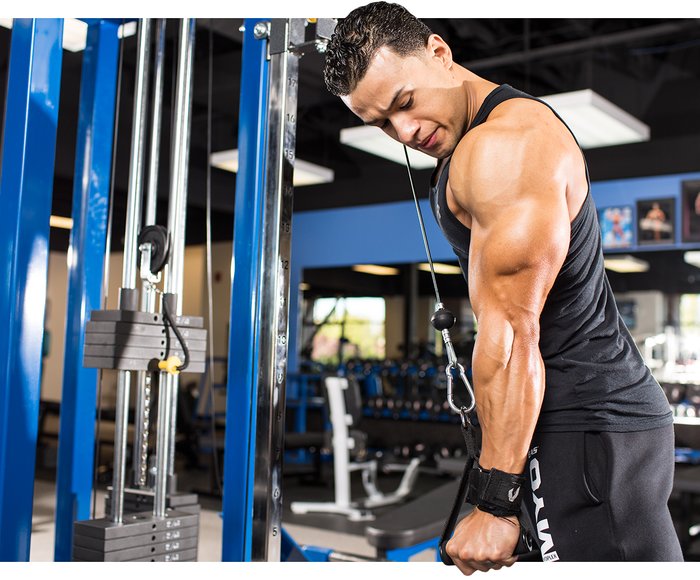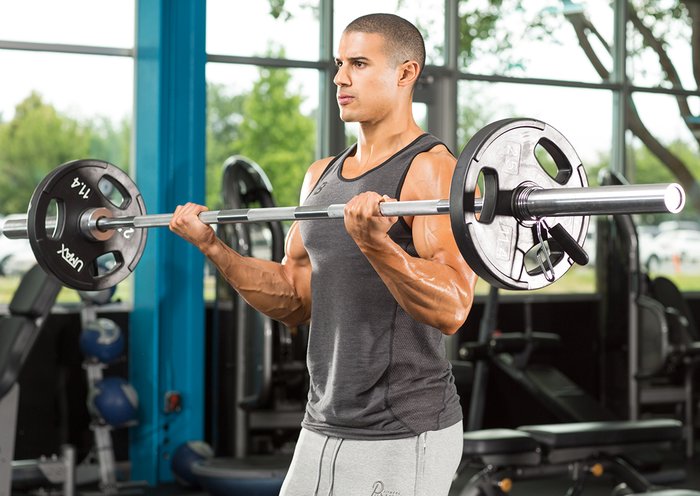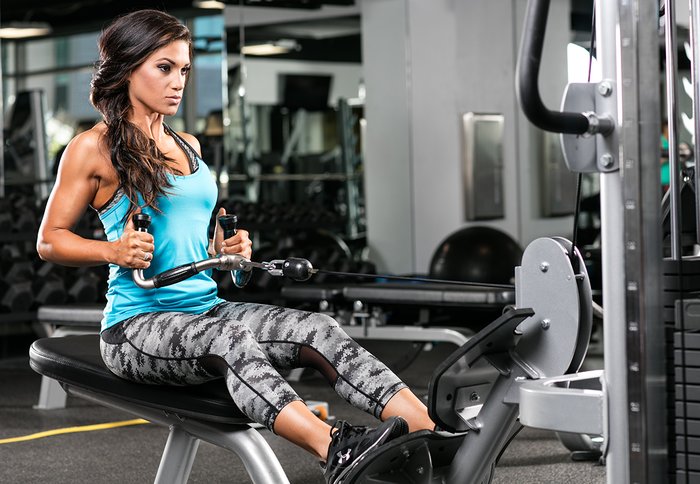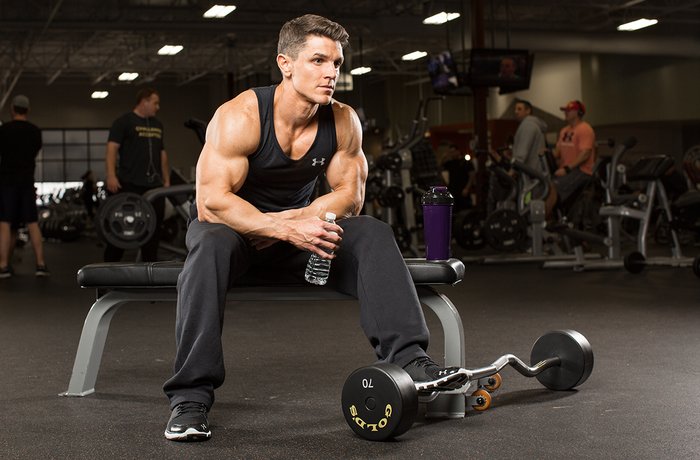As a fitness professional, I see and hear a lot of things that make me cringe or bite my tongue. One of my biggest pet peeves is the gym member who comes in five times a week for more than an hour at a time and does the same exact full-body workout with the same exact weight, sets, repetitions, and effort for years and years. And of course, their body never changes.
I can't imagine anything more discouraging than doing the same thing over and over again and not accruing incremental gains. Or maybe I'm just insane!
If you're looking to improve your appearance, the main reason you may be failing is most likely because you're no longer challenging yourself. Skeletal muscle grows bigger and stronger in response to the training stimulus, but for further gains, you need to continue making greater demands on it. If you don't progressively overload the muscles by forcing them to do more than they're accustomed to, they have no reason to make further adaptations.
The human body will not change unless it's forced to. That's why you can never grow complacent with your training. Once you fall into a comfort zone and the workouts are no longer challenging, you'll plateau.

What Is Progressive Overload?
This principle involves continually increasing the demands on the musculoskeletal system to continually make gains in muscle size, strength, and endurance. Simply put, in order to get bigger and stronger, you must continually make your muscles work harder than they're used to. Most often, that means increasing the resistance, but as you'll find below, there are other methods to increasing the overload.
Conversely, if the demands on the target muscle groups are not at least maintained or are actually decreased, your muscles will atrophy, losing size and strength.
Progressive overload is a very simple but crucial concept, laying the foundation upon which successful resistance training is built.
The progressive-overload principle doesn't apply just to lifting weights to increase muscle growth and strength; it can also be applied to cardiovascular-fitness programs, creating physiological changes that affect aerobic metabolism and the cardiorespiratory system.

Progressive Overload In Action
Say you perform a set of the barbell biceps curl with your 8RM, which happens to be 75 pounds. Over time, you'll get stronger, and your biceps will be a little bigger as a result. Completing eight is no longer very challenging.
As your biceps have adapted to the initial overload you introduced, where do you go now? Do you continue using the same load for the same number of repetitions, or are there changes you should consider making?
If you continue performing that single set of 75 pounds for 8 repetitions, don't expect any further gains. There's no reason for your biceps to grow larger or stronger; they're already capable of handling the overload. However, your biceps will become bigger and stronger if you place even greater demands on them. Here are five important ways you can do just that.
Methods Of Increasing The Overload
1. Increase the Resistance
Probably the most obvious way to increase the demands you place on your muscles is to increase the load, or weight. If 75 pounds is too easy when curling, try putting 5 pounds on each side of the bar—that should be more challenging! Remember, there's an inverse relationship between load and reps, so when you increase the weight, your reps are going to fall to some degree. That's OK, because soon enough, you'll get stronger with that resistance and be able to repeat the cycle over again.
2. Increase the Reps
You don't necessarily have to add weight; alternatively, as you get stronger, you can simply do more repetitions, which is considered another means of increasing the overload. Never stop a movement when you reach an arbitrary rep count; keep going until you can't complete any more on your own with good form.
Exercise science indicates that to maximize your muscle-building efforts, the point at which you end your set should be in the 8- to 12-rep range. So you wouldn't want to indefinitely keep adding reps as you get stronger, because those incremental gains at some point would improve muscle endurance rather than muscle size. When you reach 12 reps or so, you should increase the resistance rather than simply trying to do more. Your reps will come down, but it'll keep you in that ideal range for hypertrophy.
Remember, doing additional reps by means of advanced training techniques, such as your partner helping your complete forced reps, counts too.

3. Increase the Volume
This variable is another way to increase the overload. Volume is simply sets multiplied by reps multiplied by resistance. By adding more sets (either by doing more exercises or adding another set for your existing exercises), you're making progressively greater demands on your muscle tissue. Remember, too, that since your reps are best constrained to the 8-12 range and the loads you use don't change dramatically to stay in that range, increasing your total sets is the best way to increase total training volume.
That may mean doing 3 sets instead of 2 for all the exercises in your routine, or adding another movement (hopefully from a slightly different angle to emphasize a different area of the muscle).
4. Increase Training Frequency
Like volume, increasing the frequencywith which you train a muscle group can increase the overload. And, like volume, you can get too much of a good thing. This technique works particularly well when targeting a lagging or weak body part. The traditional approach to training a muscle group is once over the course of the training split, but training it more frequently may help bring it up, especially when used as a short-term strategy.
5. Decrease Rest Time Between Sets
There's one more way to increase the overload: reducing your between-sets rest interval, ultimately allowing you to do the same amount of work in less time. This mechanism requires your body to become more metabolically efficient with regard to anaerobic exercise (weightlifting).

Making Progressive Overload Work For You
You can include any of these methods in your training, but it's best to focus on just one at a time. As adaptation eventually occurs, and surely it will, it's good to know you have some options available, especially if simply putting more weight on the bar just doesn't seem to work any longer.
Of course, this is all assuming you're interested in building muscle (staying with the 8- to 12-rep range, which is optimal for hypertrophy). If you're looking to focus on strength, increasing the load may be a more favorable option than simply doing more reps. Likewise, individuals interested in increasing muscle endurance may find that higher repetitions combined with increases in reps, not load, is better suited for their activities.
While factors such as increasing total volume will be important to a bodybuilder, decreasing the rest time between sets and increasing repetitions may be more beneficial for endurance athletes or individuals concerned with muscular endurance and cardiovascular fitness rather than gains in strength and power. The techniques you use should be in line with your fitness goals. Prioritize what's important to you.



